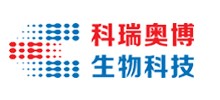产品中心
当前位置:首页>产品中心Anti-HOXD13/PE-Cy7
货号: bs-12197R-PE-Cy7 基本售价: 2980.0 元 规格: 100ul
产品信息
- 产品编号
- bs-12197R-PE-Cy7
- 英文名称
- Anti-HOXD13/PE-Cy7
- 中文名称
- PE-Cy7标记的同源盒蛋白D13抗体
- 别 名
- HOXD13; BDE; BDSD; Homeo box 4I; Homeo box D13; Homeo box protein Hox D13; Homeo box protein HoxD13; Homeobox 4I; Homeobox D13; Homeobox protein Hox D13; Homeobox protein Hox-D13; Homeobox protein HoxD13; Homeobox4I; HomeoboxD13; Hox 4I; HOX D13; Hox-4.8; Hox4I; HOXD 13; HoxD13; SPD; HXD13_HUMAN.
- 规格价格
- 100ul/2980元购买 大包装/询价
- 说 明 书
- 100ul
- 研究领域
- 发育生物学 转录调节因子 细胞分化 表观遗传学
- 抗体来源
- Rabbit
- 克隆类型
- Polyclonal
- 交叉反应
- Human, Mouse, Rat, Pig, Cow, Rabbit, Sheep,
- 产品应用
- ICC=1:50-200 IF=1:50-200
not yet tested in other applications.
optimal dilutions/concentrations should be determined by the end user.
- 分 子 量
- 36kDa
- 性 状
- Lyophilized or Liquid
- 浓 度
- 1mg/ml
- 免 疫 原
- KLH conjugated synthetic peptide derived from human HOXD13 (281-343aa)
- 亚 型
- IgG
- 纯化方法
- affinity purified by Protein A
- 储 存 液
- 0.01M TBS(pH7.4) with 1% BSA, 0.03% Proclin300 and 50% Glycerol.
- 保存条件
- Store at -20 °C for one year. Avoid repeated freeze/thaw cycles. The lyophilized antibody is stable at room temperature for at least one month and for greater than a year when kept at -20°C. When reconstituted in sterile pH 7.4 0.01M PBS or diluent of antibody the antibody is stable for at least two weeks at 2-4 °C.
- 产品介绍
- background:
The Hox proteins play a role in development and cellular differentiation by regulating downstream target genes. Specifically, the Hox proteins direct DNA-protein and protein-protein interactions that assist in determining the morphologic features associated with the anterior-posterior body axis. HoxD13 is a sequence-specific transcription factor that provides cells with specific positional identities on the anterior-posterior axis of developing mammals. Defects in HoxD13 are the cause of synpolydactyly (SPD). SPD is a limb malformation that shows a characteristic manifestation in both hands and feet. This condition is inherited as an autosomal dominant trait with reduced penetrance. Defects in HoxD13 are also the cause of brachydactyly type D and type E.
Function:
This gene belongs to the homeobox family of genes. The homeobox genes encode a highly conserved family of transcription factors that play an important role in morphogenesis in all multicellular organisms. Mammals possess four similar homeobox gene clusters, HOXA, HOXB, HOXC and HOXD, located on different chromosomes, consisting of 9 to 11 genes arranged in tandem. This gene is one of several homeobox HOXD genes located in a cluster on chromosome 2. Deletions that remove the entire HOXD gene cluster or the 5 end of this cluster have been associated with severe limb and genital abnormalities. Mutations in this particular gene cause synpolydactyly.
Subcellular Location:
Nuclear
DISEASE:
Defects in HOXD13 are the cause of synpolydactyly 1 (SPD1) [MIM:186000]; also known as syndactyly type 2 (SDTY2). SPD1 is a limb malformation that shows a characteristic manifestation in both hands and feet. This condition is inherited as an autosomal dominant trait with reduced penetrance.
Defects in HOXD13 are the cause of brachydactyly type D (BDD) [MIM:113200]. BDD is characterized by short and broad terminal phalanges of the thumbs and big toes. Inheritance is autosomal dominant.
Defects in HOXD13 are the cause of syndactyly type 5 (SDTY5) [MIM:186300]; also known as syndactyly with metacarpal and metatarsal fusion. The metacarpals and metatarsals most commonly fused are the 4th and 5th or the 3rd and 4th. Soft tissue syndactyly usually affects the 3rd and 4th fingers and the 2nd and 3rd toes. Inheritance is autosomal dominant.
Defects in HOXD13 are the cause of brachydactyly-syndactyly syndrome (BDSD) [MIM:610713]. Most of affected indi iduals exhibit generalized shortening of the hands and feet, broad and short distal phalanges of the thumbs, and cutaneous syndactyly of toes 2 and 3. The limb phenotypes obser ed in this syndrome o erlap those of brachydactyly types A4, D, E and syndactyly type 1.
Defects in HOXD13 are the cause of brachydactyly type E (BDE1) [MIM:113300]. BDE is characterized by shortening of the fingers mainly in the metacarpals and metatarsals. Inheritance is autosomal dominant.
Defects in HOXD13 are a cause of ACTERL association ( ACTERL) [MIM:192350]; which includes also ATER association. ACTERL is an acronym for ertebral anomalies, anal atresia, congenital cardiac disease, tracheoesophageal fistula, renal anomalies, radial dysplasia, and other limb defects.
Similarity:
Belongs to the Abd-B homeobox family.
Contains 1 homeobox DNA-binding domain.
Database links:
UniProtKB/Swiss-Prot: P35453.3
Important Note:
This product as supplied is intended for research use only, not for use in human, therapeutic or diagnostic applications.

